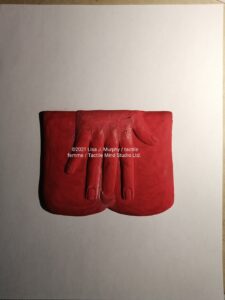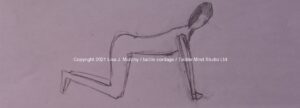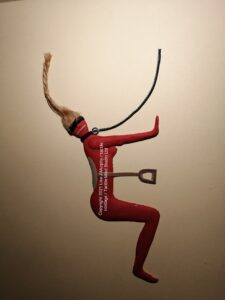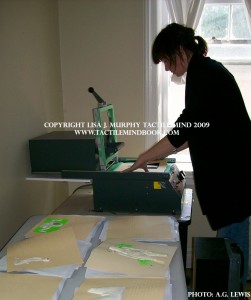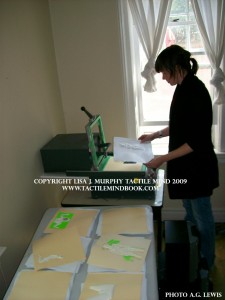I’m not really used to writing about myself (Lisa J. Murphy) in the first person, but I have to do my daily blog and so I will try. It’s amazing that no matter how old I am, as soon as I catch the flu, I resort to my 12 year old self.
If you’re just tuning in now to this blog site, i’ll give you a quick catch-up.
tactile mind is a book of nude (3-D) photographs for the blind & vision impaired. I make this book by myself & by hand. It is self-published. I would say it’s a collector’s item, because of the uniqueness of this project and handmade nature of this book. The tactile diagrams are made from photographs I have actually taken (photographs are not shown on my website). This book has received so much attention, because it is being heralded as the first book of nude photographs for the blind and vision impaired in the world. People everywhere have opinions on this work calling it “erotic” , “sensual”, “original art”, “fetish – orientated”, “pornographic!?” and some people don’t like it at all. I think it’s really great that a book created for the blind and vision impaired has resulted in international dialogue.
What can I say today about ‘tactile mind’? Well, I wish I felt well enough to press some pages and bind a couple of books – instead of hanging out in bed, toilet paper roll beside me, waiting for my next sneeze.
Local press is picking up on this work – slowly but surely. Canada with it’s conservative thinking is starting to come around. Amazing, considering the U.S. and European networks picked up the story a couple of weeks ago. But hey,Canada really is a beautiful country to live in, and Toronto itself has pockets of beauty – you just have to know were to find them.
One of my favorite interviews has to be the one for CNN – I had fed-ex’d my book to them the day before and I get a phone call from the producer who says “we’re going to interview you in 10 minutes”. Can anybody guess the number of cigarettes I nervously smoked waiting for that call? wow!
I believe the BBC world service interview was a couple of days before that. I was meant to be on camera – travelling across Toronto to get to an address that didn’t exist – they had booked the interview in Ottawa. So I did the interview in my boyfriend’s truck in the middle of Toronto rush-hour traffic. If anyone out there has to do a high-profile interview where somebody is unhappy with your idea or product, just breathe & try to keep your cool, and do the best you can. Those of you that have listened to this interview will know what I’m talking about…..It can be downloaded from the first page of this site www.tactilemindbook.com or on the wall page of my Facebook site.
I could keep writing, but my coughing fits are killing me.
Until tomorrow, Lisa
